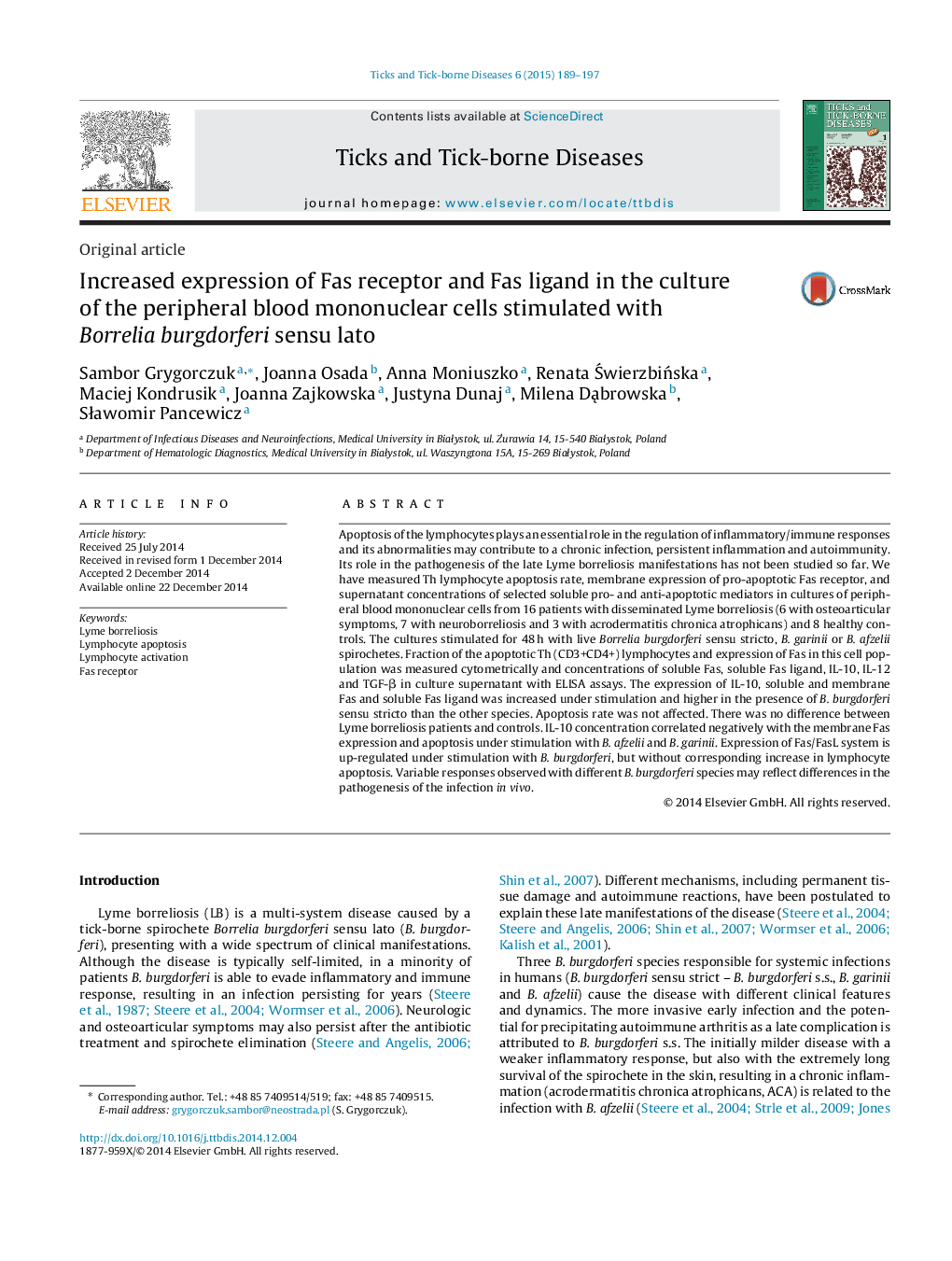| Article ID | Journal | Published Year | Pages | File Type |
|---|---|---|---|---|
| 5807100 | Ticks and Tick-borne Diseases | 2015 | 9 Pages |
â¢Borrelia burgdorferi up-regulates Fas receptor and FasL in mononuclear cells.â¢B. burgdorferi does not directly influence apoptosis rate of Th lymphocytes.â¢These results do not differ between healthy donors and Lyme borreliosis patients.â¢Endogenous IL-10 may down-regulate B. burgdorferi-induced Fas expression.
Apoptosis of the lymphocytes plays an essential role in the regulation of inflammatory/immune responses and its abnormalities may contribute to a chronic infection, persistent inflammation and autoimmunity. Its role in the pathogenesis of the late Lyme borreliosis manifestations has not been studied so far. We have measured Th lymphocyte apoptosis rate, membrane expression of pro-apoptotic Fas receptor, and supernatant concentrations of selected soluble pro- and anti-apoptotic mediators in cultures of peripheral blood mononuclear cells from 16 patients with disseminated Lyme borreliosis (6 with osteoarticular symptoms, 7 with neuroborreliosis and 3 with acrodermatitis chronica atrophicans) and 8 healthy controls. The cultures stimulated for 48 h with live Borrelia burgdorferi sensu stricto, B. garinii or B. afzelii spirochetes. Fraction of the apoptotic Th (CD3+CD4+) lymphocytes and expression of Fas in this cell population was measured cytometrically and concentrations of soluble Fas, soluble Fas ligand, IL-10, IL-12 and TGF-β in culture supernatant with ELISA assays. The expression of IL-10, soluble and membrane Fas and soluble Fas ligand was increased under stimulation and higher in the presence of B. burgdorferi sensu stricto than the other species. Apoptosis rate was not affected. There was no difference between Lyme borreliosis patients and controls. IL-10 concentration correlated negatively with the membrane Fas expression and apoptosis under stimulation with B. afzelii and B. garinii. Expression of Fas/FasL system is up-regulated under stimulation with B. burgdorferi, but without corresponding increase in lymphocyte apoptosis. Variable responses observed with different B. burgdorferi species may reflect differences in the pathogenesis of the infection in vivo.
